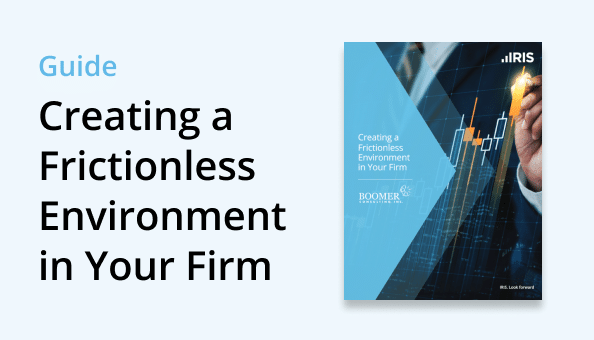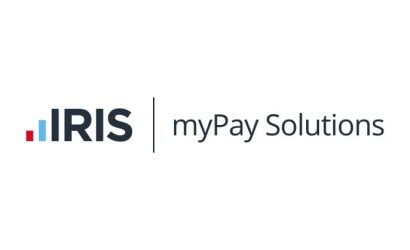BLOGS
Running Payroll in Florida: A Step-By-Step Guide

1. Setting Up Your Business
Before registering with the state of Florida, businesses must have a federal Employment ID Number (EIN) and an Electronic Federal Tax Payment System (EFTPS) account.
How to Apply for an Employer Identification Number (EIN)
The application process for EINs is managed by the IRS. To apply digitally, follow the instructions below:
- Determine Your Eligibility
Principal businesses in the United States or U.S. Territories can file for an EIN online through the IRS. To apply, the person applying must have a valid Taxpayer Identification Number (SSN, ITIN, EIN).
Applicants are limited to one EIN per responsible party per day. Per the IRS, "The 'responsible party' is the person who ultimately owns or controls the entity or exercises ultimate effective control over the entity. Unless the applicant is a government entity, the responsible party must be an individual (i.e., a natural person), not an entity." - Complete Online Application
Businesses must complete the IRS's digital application to properly request an EIN. To view the application, click here.
Applications must be completed in one session, as there is no option to save or return at a later time. Sessions that are inactive for more than 15 minutes will expire. - Submit Online Application
After completing and submitting the online application, applicants will immediately receive their EIN.
The IRS recommends businesses download, save, and print their EIN confirmation notice.
How to Enroll into the Electronic Federal Tax Payment System (EFTPS)
The application process for the EFTPS is managed by the IRS, To apply digitally, follow the instructions below:
- Begin Enrollment
To start, visit http://eftps.gov and click “Enroll” - Accept the Privacy Act and Paperwork Reduction Act
From the enrollment tab, complete the first step (“Start”) by reviewing the Privacy Act and Paperwork Reduction Act. After reading, check the box next to “I accept the Privacy Act and Paperwork Reduction Act.”
To continue, select “Business” under the “Enroll me as:” prompt. - Complete Enrollment Form
Note: If you used a coupon in the past two years or if your business is less than a year old, you are pre-enrolled in EFTPS (per EFTPS.gov)
Complete the Enrollment form by filling in each section with the appropriate information – EIN, business name/location, contact information, and payment information.
Click the “Review” button to continue. - Review Enrollment Form
Before submitting, review the EFTPS form to ensure all information is accurate.
Click the “Complete” button to continue. - Complete Enrollment Form
You will receive confirmation for submitting your EFTPS enrollment application on this screen. Within seven business days, you will receive your PIN in the mail.
This PIN is used for logging in to your business's EFTPS account.

2. Register with the Florida Department of Revenue
After receiving your EIN and EFTPS account, your business must register with the Florida Department of Revenue before conducting business activities subject to Florida's taxes and fees. To register a new business, fill out the Florida Business Tax Application (online or paper form DR-1) and submit it to a Department of Record Service Center.
If you previously submitted a Florida Business Tax Application to the Department and hold an active certificate of registration or reemployment tax account number (if you have employees), you may use the Application for Registered Businesses to Add a New Florida Location (Form DR-1A) to register.
The Form DR-1 must be completed to register to collect, report, and pay the following taxes, surcharges, and fees:
- Communications services tax
- Documentary stamp tax
- Gross receipts tax on dry-cleaners
- Gross receipts tax on electrical power and gas
- Lead-acid battery fee
- Miami-Dade County Lake Belt fees
- Rental car surcharge
- Reemployment tax
- Prepaid wireless E911 fee
- Sales and use tax
- Severance taxes (solid mineral, gas, sulfur, and oil production)
- Waste tire fee
Registering with the Florida Department of Revenue online
- To register online, visit https://floridarevenue.com
- On the homepage, select "Forms and Publications" then "Account Management and Registration"
- Select the form DR-1, and follow the given instructions to complete the application
- After review, submit the form
- Retrieve your certificate number(s) after three business days.
Registering with the Florida Department of Revenue by mail
- To register by mail, download and open the DR-1 form from the Florida revenue website.
- Complete the form, ensuring all requested information is included
- Bring or mail the completed application to your nearest taxpayer service center, or mail it to:
ACCOUNT MANAGEMENT MS 1-5730
FLORIDA DEPARTMENT OF REVENUE
5050 W TENNESSEE ST
TALLAHASSEE FL 32399-0160
For more details on registering with the Florida Department of Revenue review, Instructions for Completing the Florida Business Tax Application (DR-1).
Identification Numbers
The Internal Revenue Service (IRS) requires any business that has employees and any partnership, corporation, nonprofit organization, trust (except certain revocable trusts), or estate to have a federal employer identification number (FEIN). You will need this number to register with the Department. For more information, visit the IRS website at irs.gov.
If you are a sole proprietor (individual business owner) or an individual who is the sole member of a limited liability company, you will need your social security number (SSN) to register with the Department of Revenue. If you are not eligible to obtain a social security number, you must provide a Visa number issued by the United States Department of State.
When you register with the Department of Revenue, you are issued a business partner number as a unique identifying number for your business. The number will be located on the back of your certificate of registration.
3. Set Up Payroll
How a payroll is set up will differ by business and industry. The main decisions are:
- Payment method (direct deposit or paper check)
- Pay periods (weekly, bi-weekly, semi-monthly, or monthly)
To learn more about managing your company's payroll in-house or with a service, click here.
4. Collect Employee Payroll Forms
During onboarding, all new employees need to submit the following documents to confirm their eligibility to work in the US and to be compliant with state and federal employment regulations:
- W-4 – Employee’s Withholding Certificate, for federal tax purposes
- I-9 – Employment Eligibility Form
- Disability self-identification form (for businesses that work with government entities)
- Direct Deposit Authorization (if applicable)
As Florida doesn't have a separate W-4 form, you can use the standard federal W-4 form to collect your employees' tax information.
Note: All employees must complete their I-9 verification no later than their first day of work. I-9 forms must be stored for three years after the hire date, one year after employment ends, or whichever is later.
5. Collect, Review, and Approve Timesheets
For hourly and salary non-exempt employees, businesses must collect, review, and approve all timesheets within the appropriate time frame. Timesheets can be in paper or electronic forms.
To easily manage timesheets, businesses can utilize time and attendance solutions such as CAVU HCM.
Combining software and concierge services, CAVU's payroll solution eliminates errors and improves the employee experience without extra stress on your operation. Led by experts on all local, state, and federal policies and regulations, CAVU helps manage every part of your payroll process, including time and attendance, yearly filings, tax credit applications, and more.
To review pay period guidelines for the state of Florida, click here.
6. Calculate Payroll, Pay employees
To pay employees for their timesheets, businesses must first calculate their payrolls. To calculate and pay your employees in Florida, follow the six steps below:

- Calculate Total Time Worked for Period for Each Employee
To calculate pay and manage your payroll and taxes, you will first need to calculate the number of hours worked by each employee for the pay period. How you calculate and manage hours worked will depend on your business's specific needs and if your employees are paid by the hour or salary, and whether they are exempt or non-exempt.
Follow the appropriate step below.
Note: Employers must classify their employees correctly according to the Fair Labor Standards Act ("FLSA") or risk costly compliance violations. Misclassifying employees as exempt from overtime (when they are non-exempt) is one of the most common Fair Labor Standards Act (FLSA) violations and a focal point for government enforcement.
For Salaried Employees
The Fair Labor Standards Act (FLSA) establishes minimum wage, overtime pay, recordkeeping, and youth employment standards affecting private and Federal, State, and local government employees. Salaried employees are often considered exempt from FLSA requirements, including overtime pay, and therefore only need to be paid one set amount per pay period.
Generally, salaried employees are expected to work a minimum of 40 hours per week and are paid a fixed amount regardless of the number of hours they work. As a result, they rarely need to track or fill out timesheets, providing businesses with a simple and streamlined way to calculate payroll.
To decide the exemption status of an employee, use the U.S. Department of Labor's online duties test.
For Non-Exempt Salaried Employees
If Florida employees are considered non-exempt from FLSA requirements, they are entitled to overtime pay for any hours worked over 40 per week (consecutive seven-day period). Non-exempt employees must fill out timesheets detailing the hours they worked each day.
To calculate and pay non-exempt salaried employees, start by reviewing the employee or employees' timesheets for the pay period. Next, total the number of hours worked for all employees and determine the applicable overtime rate (which may differ for each employee, depending on their hourly wage and the number of hours they worked over 40 per week). Finally, multiply the total number of hours worked by the overtime rate and add that amount to each employee's regular pay.
For Hourly Employees
Calculating payroll for hourly employees is generally simpler than calculating payroll for non-exempt salaried employees.
Using a timesheet, clocked hours, or other timekeeping systems, record the number of hours worked for each employee for the pay period. Next, multiply the number of hours worked by the employee's hourly wage to calculate their total pay for the period. Regardless of the payroll frequency, this should be done weekly to ensure accurate and timely payroll.
Calculating Gross Pay
Gross pay is the total amount owed to an employee per pay period. It typically includes a combination of hourly wages, overtime, and other additional compensation, such as tips, commissions, and bonuses.
To calculate gross pay for hourly employees, start by multiplying the hours worked by the employee's hourly wage. Then, add any overtime pay to the total amount and include any additional compensation (such as tips or commissions) added in.
Gross Pay = (Hourly Rate)(Hours Work) + [Overtime Pay (Hourly Rate x 1.5 x Overtime hours)] - Total Payroll Deductions
Per federal regulations, employers must subtract payroll deductions for taxes and other expenses from employees' gross pay to calculate an employee's net pay. That includes both pre-tax and post-tax deductions.
The most common pre-tax deductions include:- Retirement contributions - IRA accounts, 401(k), 403(b)
- Insurance premiums - health, vision, dental, life
- Wage garnishments - court-ordered deductions, for employees who fail to repay debt
- Union dues (if applicable)
Many other eligible payroll deductions may be taken from an employee's gross pay, depending on their specific situation. Regardless of the type of deduction, always be sure to get the employee's consent before withholding any portion of their pay. - Calculate Total Payroll Taxes
Employee Taxes
To calculate the total payroll taxes owed by the employee, you will need to know the percentage of income that must be withheld from federal, state, and local income.
For federal income taxes, use the employee's IRS Form W-4 to determine their withholding allowances.
Below are the types of taxes that will be withheld:- Federal Income Tax (See IRS Withholding Tables)
- Social Security (6.2%)
- Medicare (1.45%)
Before calculating total taxes, you must first consider any pre-tax deductions. This will reduce the amount of income on which taxes are calculated. Doing so is simple: subtract the employee's total pre-tax deductions from their gross pay.
Note: there is no state income tax in Florida.
Employer Taxes
Along with calculating the withheld taxes for your employee, you must also calculate the employer taxes that will be calculated based on your total payroll.
The following is a list of payroll-related taxes required for businesses in the state of Florida:- Social Security (6.2%)
- Medicare (1.45%)
- Federal Unemployment Insurance (FUTA + 0.6%)
- State Unemployment Insurance Taxes (FL Department of Revenue)
- Subtract Deductions and Taxes from Gross Pay
To determine each employee’s net pay, simply subtract total deductions and total taxes from gross pay.
Net Pay = Gross Pay - (Post-Tax Deductions + Tax Deductions) - Distribute Employee Paychecks
Florida has no state-mandated requirement for when and how often employees must be paid. However, federal law mandates that each employee who is exempt from the overtime provisions of the federal Fair Labor Standards Act (FLSA) must be paid at least once a month; others must be paid at least twice a month. Semi-monthly pay periods must contain as nearly as possible an equal number of days.
Once you have calculated an employee's net pay, you can distribute their paycheck according to your company's regular pay schedule. This may be weekly, bi-weekly, or monthly, depending on the needs of your business and the preferences of your employees.
7. Pay and File Payroll Taxes with Florida and Federal Government
To stay in compliance with federal and state tax laws, you must submit payment for payroll taxes regularly and file payroll tax documentation using the appropriate paper or electronic tax forms.
For more information on federal or state tax forms, click the appropriate link below:
For additional information, use the resources below.
- Depositing and Reporting Federal Employment Taxes
- Electronic Federal Tax Payment System (EFTPS)
- Reemployment Tax Report and Payment Information
- Florida Reemployment Tax
For assistance on federal forms, employers can contact the IRS at 1-800-829-1040 or http://www.irs.gov.
For assistance on Florida state forms, employers can use the following methods:
| Florida State Contact Information | |
| Taxpayer Assistance | 1-850-488-6800 |
| Property Tax Oversight Assistance | 1- 850-717-6570 |
| Internet Address | Link |
8. Document and Store Payroll Records
While Florida does not have specific laws or regulations regarding retaining payroll records, per the Fair Labor Standards Act (FLSA), you must record, document, and store employee records for at least three years.
For each employee, the following information is required to be recorded and stored:
- Employee's full name and Social Security Number
- Address, including zip code
- Birth date
- Sex and occupation
- Time and day of the week when an employee's work week begins
- Hours worked each day
- Total hours worked each workweek
- Basis on which employee's wages are paid (e.g., "$9 per hour", "$440 a week", "piecework")
- Regular hourly pay rate
- Total daily or weekly straight-time earnings
- Total overtime earnings for the workweek
- All additions to or deductions from the employees’ wages
- Total wages paid each pay period, date of payment, and the pay period covered by the payment
9. Complete Year End Payroll Tax Reports
By January 31st of each year, employers in Florida are required to issue to employees and file W-2 forms, which summarize their total earnings and taxes paid over the course of that year. For contractors, you should issue and file a 1099 form, which summarizes your business earnings from that contractor.
W-2s for each employee are usually completed by the payroll software and show important information, including annual earnings, deductions, taxes withheld, and other information the employee needs to file their state and federal income tax returns.












